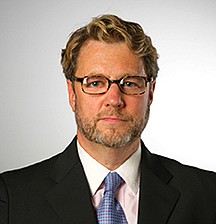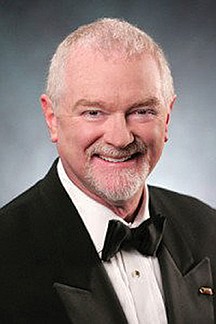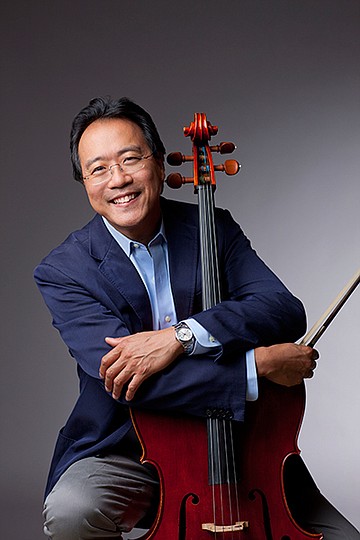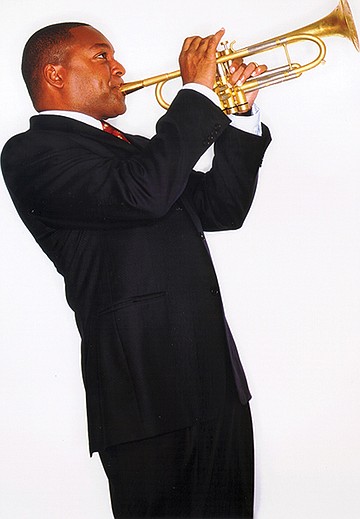 Facebook
Facebook
 X
X
 Instagram
Instagram
 TikTok
TikTok
 Youtube
Youtube

The San Diego classical music scene is healthier than anybody would have believed four months ago. The La Jolla Music Society — which specializes in chamber music but also presents ballet, jazz, orchestral programs, and cabaret performers — is doing sensationally.

It intends to raise $50 million to build a new performing-arts center in La Jolla and bolster its endowment. According to rumors, it is close to the $50 million mark, but Christopher Beach, its president and artistic director, won’t confirm that, or even confirm the $50 million goal. (An item on its website, however, mentions the $50 million objective.)
Meanwhile, the San Diego Opera, whose board voted overwhelmingly in March to go out of business, refuses to do so and has raised $4.5 million toward its 2015 season, says Edward Wilensky, spokesman.
Does $4.5 million sound lame next to $50 million in super-upscale La Jolla? Not really, when you consider the hole the opera has climbed out of. “Imagine that not only in San Diego but across America there are articles saying the San Diego Opera is a disaster,” says Beach. “Now go raise $4.5 million. Raising that much money in the middle of a crisis should not be underestimated.”

It’s remarkable for other reasons. The major donors of San Diego Opera were dominated and manipulated by its former general director, Ian Campbell. After the board reversed itself and decided to continue, those big donors stormed out in a huff. The board shrank from a ludicrously unwieldy 58 persons to a dedicated group of 26. It will be difficult getting those former big donors back, concedes John Patrick Ford, who was the second president of San Diego Opera in its 49 years.
There is another fund-raising roadblock: in March, the extraordinarily generous — and long-running — contracts of Ian Campbell and his ex-wife Ann Spira Campbell were well publicized. The Campbells’ termination pay has been quietly mediated. Potential donors “don’t want their money going to the Campbells,” says Ford.
But then there’s the sunny, money side of the street: La Jolla. According to unconfirmed rumors, two fat cats accounted for 25 million of the bucks raised by La Jolla Music Society. The cachet of those words “La Jolla” makes a difference. Back in the 1980s, the organization — then called La Jolla Chamber Music Society — had a hard time getting its regular patrons to go to El Cajon’s East County Performing Arts Center for presentations of Johann Sebastian Bach’s Brandenburg Concertos. The joke was that La Jollans feared they would be attacked by Indians out in the boondocks.
The society is in great fiscal shape. According to data compiled by watchdog ProPublica, contributions were 77.8 percent of total revenue in 2011. Beach says it is probably running about the same now. “The La Jolla Music Society has done a masterful job at cultivating its patrons,” says Bill Purves, a former boardmember. And it goes without saying that the base is quite well heeled.
“At least for the last eight years, we have run a planned surplus,” says Beach. And how. According to ProPublica, the organization had total revenue of $5.5 million in 2011 and net income of $1.8 million.

This year, the society’s members heard perhaps the world’s greatest violinist, Joshua Bell, and the world’s greatest cellist, Yo-Yo Ma. It also brought cabaret singers Patti LuPone and Ann Hampton Callaway and jazz trumpeter Wynton Marsalis with the Lincoln Center Orchestra. Thus, the society, able to rely on its affluent base, reached out to a broader segment of the community.

But the opera had done the reverse. As donations and attendance plummeted in recent years, the opera increasingly relied on a small group of the rich. “They ran these full-page portraits of the big donors,” says Ford. “They let it get out of hand — glorifying these people, and…poof!…they were gone.” During that period, “A lot of people thought they didn’t have to give” because the fat cats were giving so much.

Says Welton Jones, retired arts critic of the Union-Tribune, “The La Jolla Music Society is a well-managed, classy organization with social cachet. People will pay for it. Ian Campbell attempted that with the opera, and it got out of whack.”
In the teeth of stark declines, Campbell mainly stuck with his old formula: 19th-century grand — and very expensive — opera. In the 2014 season, the company spent $2.4 million on Giuseppe Verdi’s A Masked Ball, in which the tenor was paid $16,000 per performance. The opera, while magnificent, drew only 78 percent of the house. “We can’t afford that,” says Ford.
Ian Campbell regularly flew to Europe to scout out expensive talent. “Bulgarian sopranos,” sighs Ford. But companies such as Santa Fe Opera are thriving with American talent that is also very good and costs far less.
The new board is slashing costs. Ian Campbell’s planned $17 million budget for next year has been pared to $11.2 million. The company saved $790,000 by cutting out a Richard Wagner opera. Employees have taken a 10 percent pay cut and 13 have been laid off. By moving out of posh quarters, the company is saving $440,000 on rent.
The opera will try to broaden its appeal. It plans to send young singers out for noon concerts on the Concourse and appearances at such things as Rotary Club meetings. Students will get to see an entire dress rehearsal — not just one act. Chamber operas, recitals, and mariachi performances will be put on at smaller venues such as the Balboa Theatre. (When the company uses the Civic Theatre, it must pay stiff union wages.) The company may try semi-staged operas, with no sets and few costumes, an idea that has been successful elsewhere.
The opera will go after young audiences with modern works on current themes. It is doing John Adams’s Nixon in China next year. But this is risky. These works may be on contemporary themes, but they feature dissonant music. Ian Campbell tried too many modern operas and admitted they had not worked.
Ken Caswell, a general manager of the opera in its early days, and now retired as head of the Austin Symphony, warns against “putting on crap — modern opera, which I call tortured-souls-and-hell music.” It could be a road to ruination, says Caswell.


The San Diego classical music scene is healthier than anybody would have believed four months ago. The La Jolla Music Society — which specializes in chamber music but also presents ballet, jazz, orchestral programs, and cabaret performers — is doing sensationally.

It intends to raise $50 million to build a new performing-arts center in La Jolla and bolster its endowment. According to rumors, it is close to the $50 million mark, but Christopher Beach, its president and artistic director, won’t confirm that, or even confirm the $50 million goal. (An item on its website, however, mentions the $50 million objective.)
Meanwhile, the San Diego Opera, whose board voted overwhelmingly in March to go out of business, refuses to do so and has raised $4.5 million toward its 2015 season, says Edward Wilensky, spokesman.
Does $4.5 million sound lame next to $50 million in super-upscale La Jolla? Not really, when you consider the hole the opera has climbed out of. “Imagine that not only in San Diego but across America there are articles saying the San Diego Opera is a disaster,” says Beach. “Now go raise $4.5 million. Raising that much money in the middle of a crisis should not be underestimated.”

It’s remarkable for other reasons. The major donors of San Diego Opera were dominated and manipulated by its former general director, Ian Campbell. After the board reversed itself and decided to continue, those big donors stormed out in a huff. The board shrank from a ludicrously unwieldy 58 persons to a dedicated group of 26. It will be difficult getting those former big donors back, concedes John Patrick Ford, who was the second president of San Diego Opera in its 49 years.
There is another fund-raising roadblock: in March, the extraordinarily generous — and long-running — contracts of Ian Campbell and his ex-wife Ann Spira Campbell were well publicized. The Campbells’ termination pay has been quietly mediated. Potential donors “don’t want their money going to the Campbells,” says Ford.
But then there’s the sunny, money side of the street: La Jolla. According to unconfirmed rumors, two fat cats accounted for 25 million of the bucks raised by La Jolla Music Society. The cachet of those words “La Jolla” makes a difference. Back in the 1980s, the organization — then called La Jolla Chamber Music Society — had a hard time getting its regular patrons to go to El Cajon’s East County Performing Arts Center for presentations of Johann Sebastian Bach’s Brandenburg Concertos. The joke was that La Jollans feared they would be attacked by Indians out in the boondocks.
The society is in great fiscal shape. According to data compiled by watchdog ProPublica, contributions were 77.8 percent of total revenue in 2011. Beach says it is probably running about the same now. “The La Jolla Music Society has done a masterful job at cultivating its patrons,” says Bill Purves, a former boardmember. And it goes without saying that the base is quite well heeled.
“At least for the last eight years, we have run a planned surplus,” says Beach. And how. According to ProPublica, the organization had total revenue of $5.5 million in 2011 and net income of $1.8 million.

This year, the society’s members heard perhaps the world’s greatest violinist, Joshua Bell, and the world’s greatest cellist, Yo-Yo Ma. It also brought cabaret singers Patti LuPone and Ann Hampton Callaway and jazz trumpeter Wynton Marsalis with the Lincoln Center Orchestra. Thus, the society, able to rely on its affluent base, reached out to a broader segment of the community.

But the opera had done the reverse. As donations and attendance plummeted in recent years, the opera increasingly relied on a small group of the rich. “They ran these full-page portraits of the big donors,” says Ford. “They let it get out of hand — glorifying these people, and…poof!…they were gone.” During that period, “A lot of people thought they didn’t have to give” because the fat cats were giving so much.

Says Welton Jones, retired arts critic of the Union-Tribune, “The La Jolla Music Society is a well-managed, classy organization with social cachet. People will pay for it. Ian Campbell attempted that with the opera, and it got out of whack.”
In the teeth of stark declines, Campbell mainly stuck with his old formula: 19th-century grand — and very expensive — opera. In the 2014 season, the company spent $2.4 million on Giuseppe Verdi’s A Masked Ball, in which the tenor was paid $16,000 per performance. The opera, while magnificent, drew only 78 percent of the house. “We can’t afford that,” says Ford.
Ian Campbell regularly flew to Europe to scout out expensive talent. “Bulgarian sopranos,” sighs Ford. But companies such as Santa Fe Opera are thriving with American talent that is also very good and costs far less.
The new board is slashing costs. Ian Campbell’s planned $17 million budget for next year has been pared to $11.2 million. The company saved $790,000 by cutting out a Richard Wagner opera. Employees have taken a 10 percent pay cut and 13 have been laid off. By moving out of posh quarters, the company is saving $440,000 on rent.
The opera will try to broaden its appeal. It plans to send young singers out for noon concerts on the Concourse and appearances at such things as Rotary Club meetings. Students will get to see an entire dress rehearsal — not just one act. Chamber operas, recitals, and mariachi performances will be put on at smaller venues such as the Balboa Theatre. (When the company uses the Civic Theatre, it must pay stiff union wages.) The company may try semi-staged operas, with no sets and few costumes, an idea that has been successful elsewhere.
The opera will go after young audiences with modern works on current themes. It is doing John Adams’s Nixon in China next year. But this is risky. These works may be on contemporary themes, but they feature dissonant music. Ian Campbell tried too many modern operas and admitted they had not worked.
Ken Caswell, a general manager of the opera in its early days, and now retired as head of the Austin Symphony, warns against “putting on crap — modern opera, which I call tortured-souls-and-hell music.” It could be a road to ruination, says Caswell.
Comments